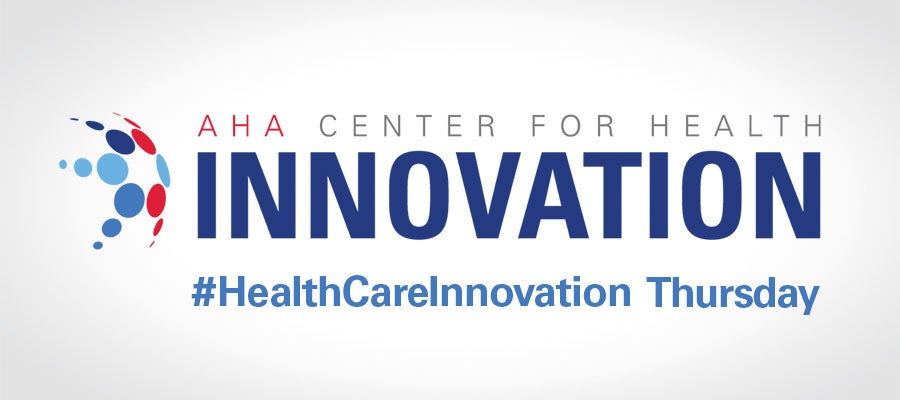Telling a Story with Data to Improve Health Equity


The majority of hospitals and health systems are collecting race, ethnicity, language and other data on demographic and socio-economic factors about their patients. But how can health care organizations use that data to tell a story that guides the delivery of quality care and improves outcomes for all patients?
A new Market Insights report from the AHA Center for Health Innovation describes how to use data to build new capabilities that improve health outcomes for patients and communities.
Branching Out from the Usual Data Sets
Most of the clinical data about patients exists within the hospital’s own electronic health record system. To build a more comprehensive profile of a given patient population and each individual patient and community health needs, hospitals and health systems can add layers of additional data sets to connect all the dots. The additional data sets would include, but not be limited to:
- Race, ethnicity and language (REaL) data
- Clinical data from all affiliated and unaffiliated providers, including social needs data
- Community health needs assessments
- Medical and drug claims data from payers
- Self-reported experience and outcomes data from patients
- Screening data for patients’ social needs and community-based services
- Patient-generated data from remote monitoring, smartphones, mobile applications and wearable devices
- Social needs data from public health agencies, social welfare groups and community health organizations
To share data sources and analysis, hospitals and health systems must build relationships and collaborate with other stakeholders who share the same vision of eliminating health disparities for the benefit of all in the community.
After developing these collaborations and partnerships, hospital teams need access to the right technologies and technology capabilities. The technology must be interoperable so it can collect clinical, financial and social data from disparate technologies used by other providers, payers, pharmacies, patients, public health agencies, and social and community groups and organizations.
The technologies must be able to clean the data, integrate the data into a single database and make the data easily available and usable by researchers in accordance with the data governance policies of the hospital or health system. Some hospitals develop their own technological capabilities, but many organizations participate in electronic health information exchanges (HIEs) to standardize the data. Then the data transferred can seamlessly integrate into the EHR, further improving patient care.
Investigating Patterns in Health Disparities
Credible data will display patterns in health disparities and point leaders toward a solution. Many providers are surprised by what they learn when they look at the data. The AHA’s Institute for Diversity and Health Equity has created several dashboards to provide leaders with a list of potential measures to use to identify potential disparities and released a toolkit for stratifying and using data.
Hospitals and health systems can identify disparities by querying data sets to see how processes or outcomes or both differ by demographics or geography. The Market Insights report provides examples.
Ideally, hospitals and health systems will create internal benchmarks to identify variances in their own practices that contribute to disparate health outcomes, and supplement their own stratifications of patient data with regional or national benchmark data from their peers. Benchmarking will tell a story that will send teams looking for an answer and the appropriate intervention.
Intervening to Address Health Inequities
After a hospital or health system identifies and investigates a pattern of disparate outcomes in its patient population and community, the next step is tailoring interventions to drive improvements in patient care and outcomes. Having data about the community enables an organization to customize its approach.
For example, stratifying emergency department visits by ZIP code could reveal that some communities in a hospital’s service area lack primary care providers. Improving access to community-based, health-related services may be a viable intervention to reduce such a disparity.
In addition, hospitals and health systems can use data from their community health needs assessments to learn about the community’s most pressing health needs and understand the health behaviors, risk factors and social determinants of health that influence their community’s health and well-being.
Another area where data can help the most is internally, for health care teams. Teams can use the data to better understand health disparities and improve health equity as part of education, discussion and awareness of implicit bias and an organization-wide commitment that everyone will work to reduce and eliminate disparities.
An effective method is using the data in a series of educational steps. Clinicians, by nature, respect and follow the scientific progress. The successful path to changing their practice can be facilitated by telling a story with the data. Organizations may start with blinded data to get teams familiar with the methodology and then move to unblinded data. Organizations find that unblinding the data makes all the difference. It’s not about shaming, but rather about leaning into the competitive nature of clinicians. No one wants to be at the bottom of the list. In addition, low performers can be paired with higher performers to encourage learning and drive overall improvements in patient outcomes.
COVID-19 has illuminated health and health care disparities in communities across the U.S. Leading hospitals and health systems are collecting comprehensive patient data; investigating patterns in health disparities; tailoring interventions; and aligning priorities with identified community needs — all to advance health equity.
Mital Patel is senior director of market intelligence at the AHA Center for Health Innovation.

